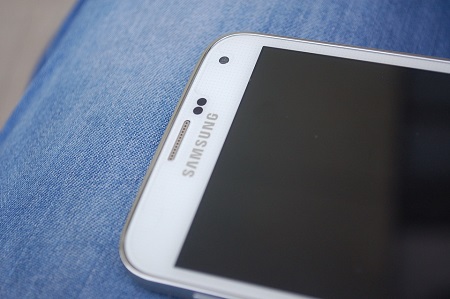Several reports indicate that the Korean electronics company is suspending production of the device.
Since the Samsung Galaxy Note 7 launch, the company has faced one nightmare after the next. The problems may have just reached a new high point. Yonhap News, the largest news agency in South Korea, reports a suspension of the company’s flagship smartphone.
The South Korean News agency cited a source inside Samsung’s supply chain.
The source, who remained anonymous, explained that “This measure includes a Samsung plant in Vietnam that is responsible for global shipments (of the Galaxy Note 7).” At the time of the writing of this article, an official confirmation of the suspension of Samsung Galaxy Note 7 production had not been made.
 That said, it would not be impossible to believe that this step would be taken. The new flagship smartphone from Samsung has seen nothing but problems since its first launch. This included safety problems in the United States.
That said, it would not be impossible to believe that this step would be taken. The new flagship smartphone from Samsung has seen nothing but problems since its first launch. This included safety problems in the United States.
Both AT&T and T-Mobile stopped selling the Samsung Galaxy Note 7 when several caught fire.
There were five separate incidents in the United States in which the Samsung smartphones caught fire. This was reportedly a problem with the battery. Moreover, an Australian telecom company called Telstra may also be doing the same thing. The Verge reported that it had access to a memo from the company saying the Galaxy Note 7 would soon be withdrawn not only from its own shelves, but from stores worldwide.
As published on The Verge, the memo explained that “Samsung has temporarily paused the supply of new Galaxy Note 7 smartphones following a reported incident in a replacement phone in the US. Samsung is confident in the replacement Note 7 and says they have no reason to believe it’s not safe.” That said, it also indicated that it would be progressing to create a “replacement Note 7.” No further information was shared about that mobile device.
On October 10th, Reuters reported that the electronics giant confirmed it would be “adjusting shipment volumes.” This move was being made to give the company the opportunity to hold in-depth inspections and to ensure proper quality control was in place. That said, it did not say anything further about ceasing the production of its product.
An Astound Commerce survey showed that people are shopping on smartphones more than ever.
The results of a new mobile commerce growth rate study have been released by Astound Commerce. The study was based around a survey titled “Mobile Accelerates to the Express Lane.”
The report illustrated the m-commerce sales trend in the United States and where they will reach this year.
The study results indicated that the American Mobile commerce growth rate would bring sales to $130.92 billion by the close of the year. This means that it will make up 33 percent of the overall e-commerce sales completed this year. Moreover, in the prior 12 months, there was a 40 percent year over year increase in discretionary spending in mobile commerce. In e-commerce, that figure was markedly lower, at 11 percent.
The mobile commerce growth rate also impacted other parts of the shopping process aside from purchases.
 The Astound Commerce report indicated that buying was only one component of the mobile commerce journey. People are also using their smartphones to research products. Among the survey respondents, 40 percent said they read their emails and would frequently visit retailer sites at the same time. Moreover, another 40 percent said smarphones make the shopping transaction process faster.
The Astound Commerce report indicated that buying was only one component of the mobile commerce journey. People are also using their smartphones to research products. Among the survey respondents, 40 percent said they read their emails and would frequently visit retailer sites at the same time. Moreover, another 40 percent said smarphones make the shopping transaction process faster.
Consumers have developed a heavy reliance on their mobile devices. They will frequently consult their small screen gadgets before other channels. This includes both shopping in-person at brick and mortar stores and visiting e-commerce sites. Fifty five percent of device users will research products on their smartphones ahead of going to a store in-person. Moreover, 42 percent said they look into products on their smartphones and tablets while in-store.
The mobile commerce growth rate was greatly influenced by certain specific factors. For instance, 68 percent of shoppers feel relevant product search results are important. Fifty nine percent value seeing high-quality product images. Another 49 percent said they appreciate it when detailed product reviews are made available for them to read before purchase. A whopping 98 percent felt it was important for consistency to exist throughout all channels. A product’s price should be the same from a given merchant regardless of whether the purchase is made over m-commerce, e-commerce or in person.
 That said, it would not be impossible to believe that this step would be taken. The new flagship smartphone from Samsung has seen nothing but problems since its first launch. This included safety problems in the United States.
That said, it would not be impossible to believe that this step would be taken. The new flagship smartphone from Samsung has seen nothing but problems since its first launch. This included safety problems in the United States.
 The Astound Commerce report indicated that buying was only one component of the mobile commerce journey. People are also using their smartphones to research products. Among the survey respondents, 40 percent said they read their emails and would frequently visit retailer sites at the same time. Moreover, another 40 percent said smarphones make the
The Astound Commerce report indicated that buying was only one component of the mobile commerce journey. People are also using their smartphones to research products. Among the survey respondents, 40 percent said they read their emails and would frequently visit retailer sites at the same time. Moreover, another 40 percent said smarphones make the 